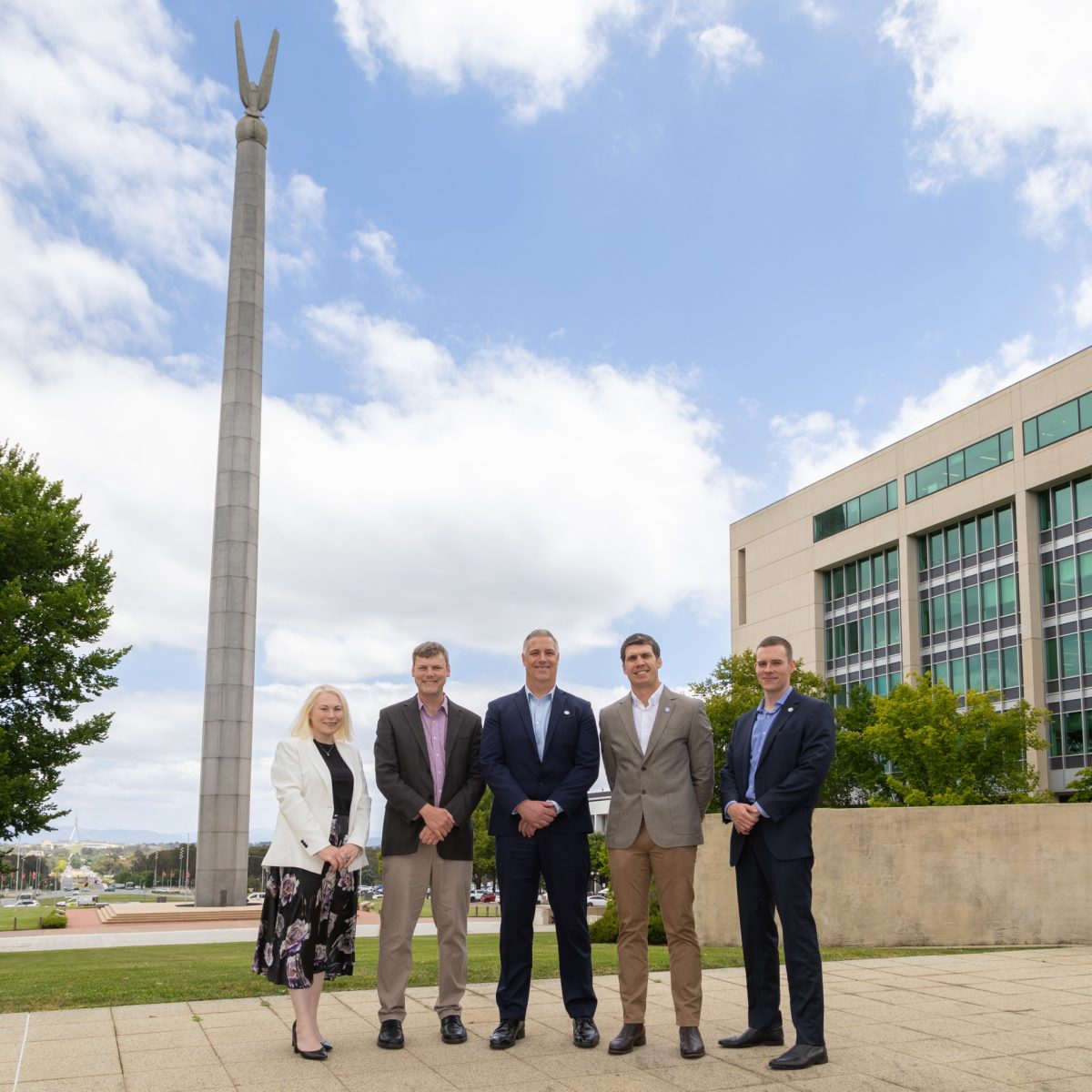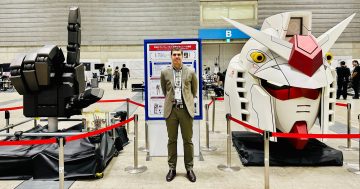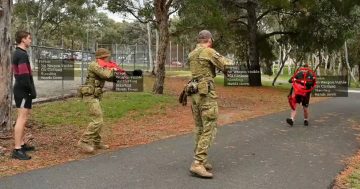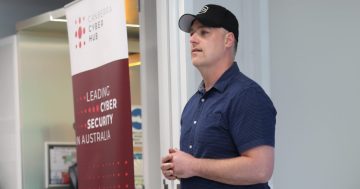
On a mission … Ilsa Stuart (Defence Trailblazer Senior Partnerships Manager), Dr Tim Lynar (UNSW), Jim Boekel (Bluerydge CEO), Adam Haskard and Thomas Kazan (Bluerydge directors). Photo: Michelle Kroll.
When fast, informed decision-making can mean the difference between life and death in the field, a new state-of-the-art AI chatbot project is developing ‘mission-ready’ solutions with real-time impact.
From warfare to welfare, the collaboration between technologists at cyber security company Bluerydge and UNSW Canberra aims to optimise Australia’s defence (and healthcare) operations with functional, fully trained AI chatbot systems that don’t rely on internet connectivity.
Bluerydge project lead and PhD candidate Adam Haskard says these systems can bolster the effectiveness of military missions involving submarines, EW aircraft and deployed troops, which rely on real-time intelligence, threat detection and decision support.
He says that while other AI chatbot systems, such as ChatGPT, have impressive language understanding and generation capabilities, they rely heavily on centralised data processing and cloud-based services.
“This results in limited data sovereignty and offline functionality, making them suboptimal for Defence and healthcare applications, particularly in remote field operations,” Adam says.
“The Bluerydge project aims to develop and deploy localised, decentralised Language Learning Model (LLM) systems tailored to end users in the Australian Defence Force (ADF) and associated sectors.”
Adam says this essentially means a pre-trained AI chatbot can be fed up-to-date local data on-site, creating a “unique fingerprint” of information that can be used to support or upskill people on the ground.
So, for example, on a ship where you might experience frequent internet disruption, these AI chatbot systems would allow personnel to easily input and access engine or positioning data to ensure timely and critical decision-making can occur in wartime or highly stressful situations.
“Even when staff rotate or move around, the big benefit is the ability to have a natural language conversation with the chatbot to access local environment data quickly and easily,” Adam says.
“The person can get up to speed quickly and critical decision-making time is reduced. And yes, that can mean the difference between life and death in some instances.”
The beauty of the project is its potential for broader commercial applications – such as in mobile healthcare units, where the chatbot systems can manage patient data, provide diagnostic support, and facilitate telemedicine consultations in areas where internet access is not guaranteed, according to Adam.
“This can enhance quality of care and ensure timely medical interventions,” he says.
The project, Sierra Blue, is supported by funding from Defence Trailblazer’s Accelerating Sovereign Industrial Capabilities program.
The Federal Government initiative aims to bring together industry, academic and Defence partners to accelerate the adoption of leading-edge technologies and solutions to enhance Australia’s sovereign defence capabilities.
The project has already attracted interest from the US Defence Department, according to Adam, who adds they are booked out for demonstration days at local Defence events.
Major telecommunications companies are also investigating the potential of the new chatbot systems to help manage their data centres.
One of the factors that distinguishes the project from potential competitors is the support from scientists at UNSW, who are researching and working behind the scenes on Sierra Blue, Adam says.
“The key difference is that this is likely to ensure higher accuracy of the AI data, providing additional safeguards to the chatbot systems,” he says.
With this project, Adam (who is researching the secure robotic elements of AI) saw an opportunity to take disconnected AI from the lab to the real world.
He insists that being AI-enabled while being data secured “will be a requirement of the economy tomorrow”.
“If we were told in ’85 what the internet was going to do, well …,” Adam offers.
“If companies do not embrace AI technology, they will be left behind. It’s not about replacing people; it’s about providing more streamlined support to your endeavours.
“The sectors that are AI-enabled are able to be much more competitive because the time to outcome is much less.
“The market rewards precision and speed … and that will rule the world.”
For more information, visit Bluerydge.


















